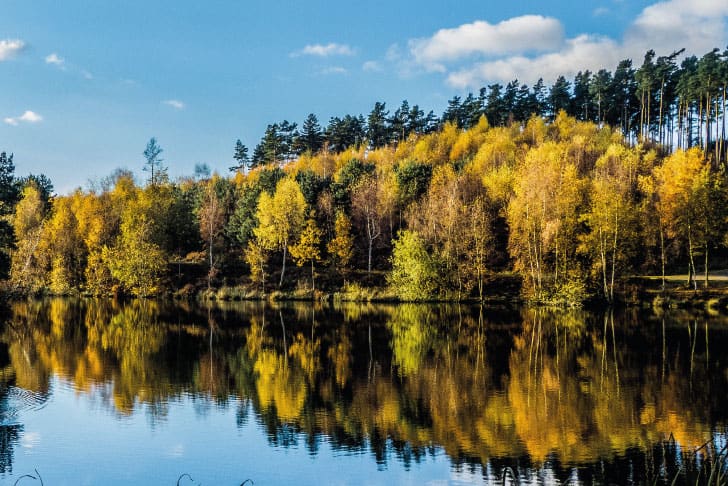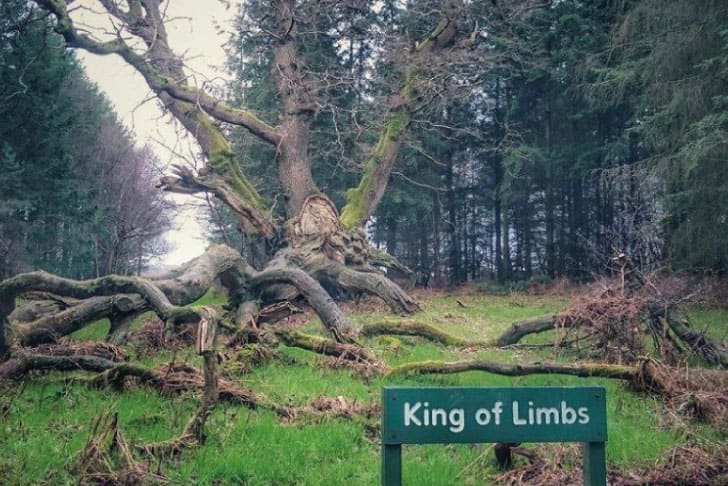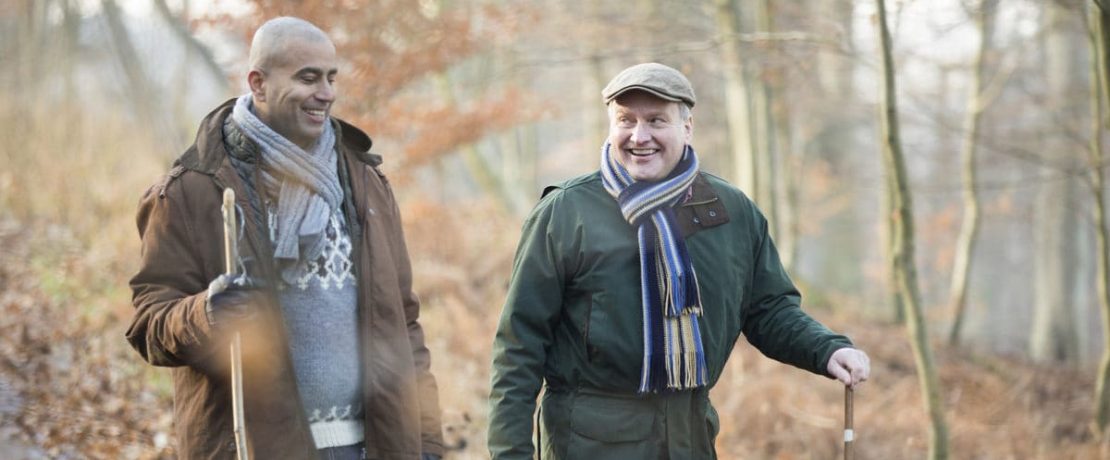Enjoy the autumn colours in England’s historic forests
Whether you’re into walking, wildlife watching or ‘leaf-peeping’, here are some tips on what to look out for in some of our favourite forests to visit in autumn.
Cannock Chase, Staffordshire
Nestled between Stafford and Birmingham, Cannock Chase is the country’s smallest Area of Outstanding Natural Beauty (AONB). The forest is crisscrossed by paths for visitors to explore, including a heritage trail and the Heart of England Way.
Despite its compact size, the Chase offers a wide variety of landscapes and wildlife, including hundreds of wild deer and even some of our rare native red squirrels.
Top tip: Take in the sights on these walking trails – from gentle strolls to longer hikes.

The New Forest, Hampshire
The New Forest is England’s smallest National Park. Its former status as a royal hunting ground and historic commoners’ rights have helped preserve the forest over the years, while centuries of grazing by deer, cattle and its indigenous ponies have helped shaped the landscape.
Autumn is a special time in the forest, as it’s the only time of the year that you’ll see pigs and piglets wandering among the leaves. As part of a tradition going back to the time of William the Conqueror, they’re released into the forest to eat the chestnuts and fallen acorns that are poisonous to the ponies and cattle.
Top tip: Bramshaw village and Bolderwood are the best places to spot the pigs and piglets.
The Forest of Dean, Gloucestershire
Dubbed ‘Queen of forests all’ by an admiring Tudor poet, the Forest of Dean on the borders of England and Wales boasts the country’s largest population of oak trees. In 1938 the forest became England’s first National Forest Park.
The forest is said to have been the inspiration for the magical woods of JRR Tolkien’s Middle Earth. Tolkien helped to excavate a Roman temple in the area at the same time as he was working on The Hobbit.
Top tip: the Dean Forest Railway makes a great day out for kids – and it’s dog friendly!
Savernake Forest, Wiltshire
Covering around 4,500 acres within an AONB, Savernake is one of Britain’s oldest remaining forests and steeped in history and myth. Although privately owned by the same family for more than 30 generations since the Norman conquest, Savernake is managed by the Forestry Commission and large areas of the forest are open to the public.
Its thousands of ancient oaks include the gnarled and hollow Big Belly Oak, one of 50 great British trees to be recognised for the Queen’s Golden Jubilee. But tread carefully: the devil is reputed to appear to anyone who dances naked around the tree 12 times at midnight.
Top tip: Use these directions to track down some of the forest’s famous monumental trees.

Sherwood Forest, Nottinghamshire
Whether or not the legendary Robin Hood ever did take refuge under its boughs, Sherwood’s has a rich and fascinating history.
Once a favourite hunting ground of medieval kings, the forest is now a National Nature Reserve and includes a 450-acre country park open to the public 364 days a year.
Sherwood is known for ancient oaks, including the giant Major Oak – at least 10 metres in circumference, reckoned to be over 800 years old and now in need of some careful propping up.
The forest’s other inhabitants include some of Europe’s rarest invertebrates, which thrive in its ecologically rich mix of old woodland and heath. Some of the forest’s heathland habitats are as rare as rainforest!
Top tip: visit England’s Tree of the Year 2014 – the Major Oak.









